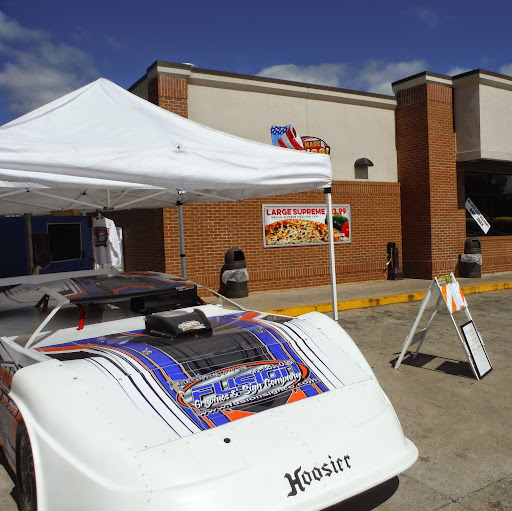Christopher M Rhoads
age ~53
from Yakima, WA
- Also known as:
-
- Christopher R Rhoads
Christopher Rhoads Phones & Addresses
- Yakima, WA
- Selah, WA
- Seatac, WA
Us Patents
-
Methods And Apparatus For Determining A Shim Profile For Assembling A First Part With A Second Part
view source -
US Patent:20220245294, Aug 4, 2022
-
Filed:Dec 3, 2021
-
Appl. No.:17/541709
-
Inventors:- Chicago IL, US
Theodore M. Boyl-Davis - Snohomish WA, US
Ronald J. Collins - Brier WA, US
Christopher M. Rhoads - Seattle WA, US
Clifford D. Borowicz - Mukilteo WA, US
Steve X. Cheng - Bellevue WA, US
Joel T. Adriance - Arlington WA, US -
Assignee:The Boeing Company - Chicago IL
-
International Classification:G06F 30/15
-
Abstract:A method for determining a shim profile for assembling a first mating surface of a first part with a second mating surface of a second part includes: obtaining a baseline surface model of the first mating surface; scanning the first mating surface when the first part is in a deviated configuration to generate a scan-based surface model of the first mating surface; deforming the scan-based surface model of the first mating surface relative to the baseline surface model of the first mating surface to generate a first deformed surface model of the first mating surface; deforming the first deformed surface model of the first mating surface relative to a surface model of the second mating surface to generate a second deformed surface model of the first mating surface; and comparing the second deformed surface model of the first mating surface to the surface model of the second mating surface.
-
Methods Of Processing A Glass Ribbon
view source -
US Patent:20150321943, Nov 12, 2015
-
Filed:Jul 21, 2015
-
Appl. No.:14/804605
-
Inventors:- Corning NY, US
Todd Benson Fleming - Elkland PA, US
Dale Charles Marshall - Brockport NY, US
Gary Edward Merz - Rochester NY, US
Christopher Michael Rhoads - Seattle WA, US
John Earl Tosch - Wellsburg NY, US
Thaddeus Francis Trzeciak - Naples NY, US -
International Classification:C03B 33/023
B65G 49/06
B26D 7/32 -
Abstract:Methods of processing a glass ribbon are provided. The method includes the step of traversing the glass ribbon through a travel path at a predetermined velocity and severing the glass ribbon to create an upstream web and a downstream web. The method further includes the step of increasing a relative velocity of a downstream edge portion with respect to an upstream edge portion to create a gap between an upstream severed edge and a downstream severed edge. In other example methods, a segment of the glass ribbon is removed to create a gap between an upstream severed edge and a downstream severed edge. In still further example methods, an upstream severed edge is directed along a second travel path to create a gap between the upstream severed edge and a downstream severed edge.
-
Apparatus And Method Characterizing Glass Sheets
view source -
US Patent:20150259236, Sep 17, 2015
-
Filed:Jun 2, 2015
-
Appl. No.:14/728121
-
Inventors:- Corning NY, US
Gary Edward Merz - Rochester NY, US
Christopher Michael Rhoads - Seattle WA, US -
International Classification:C03B 33/023
C03B 33/033
C03B 33/02
C03B 33/03 -
Abstract:An apparatus and method for continuous edge separation in a continuous process for a ribbon of flexible brittle material such as a thin ribbon of glass is disclosed wherein an initial flaw or score is formed in the ribbon. The initial flaw is turned into a crack that propagates continuously throughout the processing of the ribbon. The cracking itself results in no material loss. After cracking, the cut side edge is routed along a path different than the interior quality region to avoid contact damage between the quality region and the edge portion. The quality region can be provided for further processing or be stored. The flexible, brittle ribbon can be sourced from a hot forming device or from a roll (spool) of substrate.
-
Methods Of Processing A Glass Ribbon
view source -
US Patent:20140130649, May 15, 2014
-
Filed:Nov 9, 2012
-
Appl. No.:13/673385
-
Inventors:Chester Hann Huei Chang - Painted Post NY, US
Todd Benson Fleming - Elkland PA, US
Dale Charles Marshall - Brockport NY, US
Gary Edward Merz - Rochester NY, US
Christopher Michael Rhoads - Seattle WA, US
John Earl Tosch - Wellsburg NY, US
Thaddeus Francis Trzeciak - Naples NY, US -
International Classification:C03B 21/00
B26D 7/32 -
US Classification:83 26, 83 27, 83 23
-
Abstract:Methods of processing a glass ribbon are provided. The method comprises the step of traversing the glass ribbon through a travel path at a predetermined velocity and severing the glass ribbon to create an upstream web and a downstream web. The method further includes the step of increasing a relative velocity of a downstream edge portion with respect to an upstream edge portion to create a gap between an upstream severed edge and a downstream severed edge. In other example methods, a segment of the glass ribbon is removed to create a gap between an upstream severed edge and a downstream severed edge. In still further example methods, an upstream severed edge is directed along a second travel path to create a gap between the upstream severed edge and a downstream severed edge.
Resumes

Powdercoat Technician
view sourceLocation:
Yakima, WA
Industry:
Semiconductors
Work:
Magic Metals
Powdercoat Technician
Powdercoat Technician
Skills:
Customer Service
Mechanical Engineering
Solution Selling
Solidworks
Manufacturing
Mechanical Engineering
Solution Selling
Solidworks
Manufacturing

Christopher Rhoads
view source
Christopher Rhoads
view source
Christopher Rhoads
view source
Christopher Rhoads
view sourceLocation:
United States

Christopher Rhoads
view sourceLocation:
United States
Name / Title
Company / Classification
Phones & Addresses
Organizer
GP VENDING, LLC
Jr Properties, LLC
Isbn (Books And Publications)

Classmates

Christopher Rhoads
view sourceSchools:
Christchurch School Christchurch VA 1959-1963
Community:
Louis Randall, Andrew Murphy, Kevin Allen, Caswell Cooke, Ricky Rodriguez

Christopher Rhoads
view sourceSchools:
Altoona Rural High School Altoona KS 1991-1995
Community:
Pam Pryor, June Fail

Christopher Rhoads
view sourceSchools:
Box Elder High School Brigham City UT 1997-2001
Community:
Jessica Furrow, Erica Ruiz, George Bromley, Mandy Strange, Mark Phenes, James Bouwhuis, Stacey Johnson, Marti Allred, Nathan Potter

Christopher Rhoads | Magn...
view source
Christopher Rhoads | Have...
view source
Chris Rhoads | Daniel Boo...
view source
Chris Rhoads, Pasco High ...
view source
Chris Rhoads, Las Vegas H...
view sourceYoutube
Flickr
Myspace
Googleplus

Christopher Rhoads
Lived:
Seattle, WA
Work:
Boeing - Manufacturing, Process, and Physics Engineer (2011)
Corning Inc. - Research and Design Engineer (2010-2011)
Lockheed Martin Aeronautics - Applications Engineer (2009-2009)
Corning Inc. - Research and Design Engineer (2010-2011)
Lockheed Martin Aeronautics - Applications Engineer (2009-2009)
Education:
Binghamton University - Mechanical Engineering

Christopher Rhoads

Christopher Rhoads

Christopher Rhoads

Christopher Rhoads

Christopher Rhoads

Christopher Rhoads
view source
Christopher Rhoads
view source
Christopher Rhoads
view source
Christopher Rhoads
view source
Chris Rhoads
view source
Christopher Rhoads
view source
Christopher Rhoads
view source
Christopher Rhoads
view sourceGet Report for Christopher M Rhoads from Yakima, WA, age ~53
![[UTAU] ILL QUIT SINGING [Chris Rhoads Append SOLID] [UTAU] ILL QUIT SINGING [Chris Rhoads Append SOLID]](https://i.ytimg.com/vi/EQHwyOoabL4/0.jpg)
















